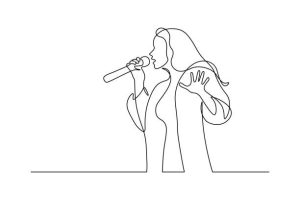The Soft Palate: What Does It Mean?

In the last article in this series, I discussed the diaphragm. We challenged certain uses of the term and used the available evidence to show what it could and could not do. The next two articles are going to discuss the palates, starting with the soft palate.
Disclaimer: the “What Does It Mean?” series is meant to demystify some of the commonly used lingo in the voice studio and beyond. I will give evidenced information and cite sources so you can dive deeper.
So, what is the soft palate?
If you run the tip of your tongue from the back of the top teeth backward along the roof of your mouth, you will feel a solid, bony ridged arch which is the hard palate, perhaps a small bump near the middle end of the hard palate called the torus palatinus, and then a squishy section that ends with the uvula which is the soft palate. According to Medical News Today,
“The soft palate does not contain any bone but is a fleshy area that ends in the uvula… The function of the uvula is to block the nasal cavity when a person is eating or drinking. The soft palate comprises muscle and tissue, which make it mobile and flexible. When a person is swallowing or sucking, the soft palate completely separates the mouth from the throat, which helps keep food out of the respiratory tract.”
The soft palate is also called the velum, velum palatinum, palatal velum, or the muscular palate. These other names come from descriptions of the function and place of the anatomical part. Velum is defined by Merriam-Webster as “a membrane or membranous part resembling a veil or curtain,” and palatal refers to the palate area of the mouth. It is involved with breathing but is not a primary muscle of inhalation. Since the soft palate is used to differentiate between the mouth and the nasal cavity, it is active in speech and singing.
So, how do we use the soft palate in singing?
The common refrain about the soft palate is “you need to always lift your soft palate,” “your soft palate isn’t high enough because you’re nasal,” “if you don’t lift your soft palate, you can’t make classical sounds.” While there are benefits from having a lifted soft palate, the need to voluntarily lift it leads to discussion. The lift of the soft palate along with the lowering of the larynx (voice box) are staples of structural positioning when we are singing classically (search on the internet and you’ll see many resources). These two movements help singers find certain resonances and tone qualities that are needed for classical sound production. One quick exercise to get a lifted soft palate and lowered larynx is called the tracheal tug. Breathe in through your mouth in an “oo” lip and tongue position (tongue can also be neutral) quickly allowing the air to make noise (or not) and you’ll attain tracheal tug (downward movement of the trachea during inhalation). This action sets you up to begin the singing exhalation. As with all exercises, the goal is not to use full effort, but to find the easiest most efficient way to let air get into your body and help prepare the body for singing.
Many voice teachers will discuss with each other how much control someone should have with their soft palate. I am part of a belief that the shapes inside and outside of the mouth with the correct air flow will provide the lift needed without extra thought, but there are disagreements. As with all things, talk to your teacher about the best ways to help create the ideal positions for singing.
What’s next?
Please reach out for any article term suggestions! Always remember that the goal of singing is ease and effectiveness!
